Prosperity Found: A Glimpse into the Life of Thomas Sato
In the early 1920s, Tsuneji "Thomas" Sato (1882-1969) found himself in the middle of a Michigan lumber camp on the opposite side of the world from his birthplace in Japan. Working with precision and productiveness and, most importantly, personality, Sato served a hot meal to a group of vagabonds who, although weary from their travels, had no apparent reason to be weary at all. Sato knew that firsthand, as he and his co-workers had been the ones responsible for getting this party — and their extravagant caravan — over hills, across rivers and through the wilderness.
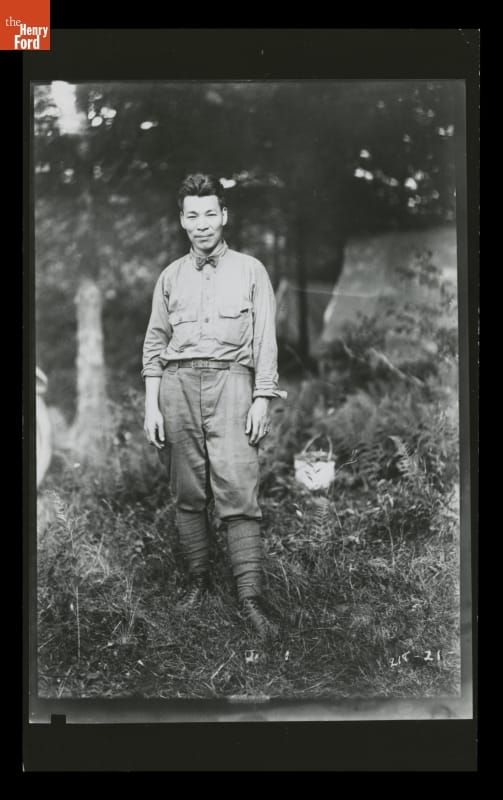
Tsuneji Sato, 1921. / THF127407
While the lumber camp was obscure, the camping party’s members certainly were not, as Sato’s employer was the man who needed the vast swaths of hardwood being extracted out of Michigan’s northern forests at this camp, and others, to feed his automobile manufacturing machine, Ford Motor Company. At the heart of the company’s brand recognition was the polarizing, do-it-yourself folk hero Henry Ford whose wealth contradicted his own populist ethos and whose life was wholly dependent on a group of people who made things happen for him. A group, for some time, that included Sato. So much so that Ford postponed this trip just to ensure that Sato could make it work around his own personal schedule.
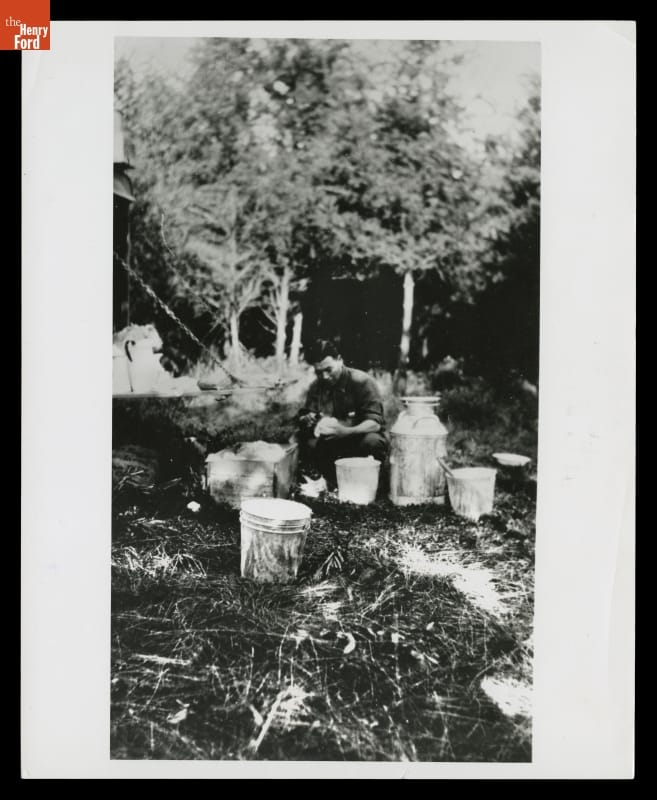
Tsuneji Sato preparing a meal at Sidnaw Lumber Camp in 1923. / THF127423
In some sense, the Fords were no different than other wealthy families of the early 20th century who had the means to staff their homes, preferring to hire domestic servants from a growing Japanese immigrant population generalized at the time as “polite, careful, clean, ambitious, and intelligent.” Japanese immigration to the United States had gradually increased over the late 1800s as the notoriously insular empire emerged from isolation and struggled with the abrupt pace of industrialization, regional war and a northern famine. By the early 1900s, hundreds, if not thousands, of Japanese immigrants were finding employment success in America’s household services sector, but a general spike in immigration began escalating a nativist angst among white Americans.
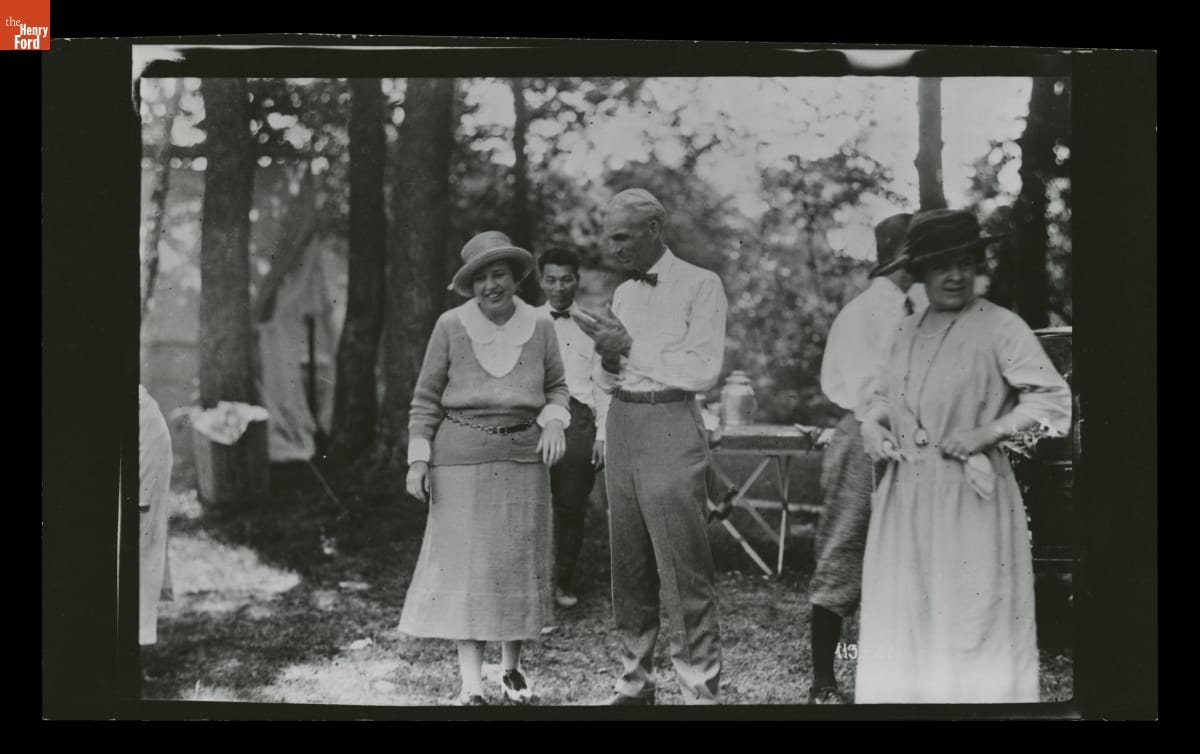
The Ford Family and Tsuneji Sato. Pictured left to right are Eleanor Ford, Sato, Henry Ford, Edsel Ford and Clara Ford on a 1921 camping trip in Maryland. / THF127405
A furor of anti-Asian discrimination and violence, especially on the West Coast where Asian American communities were expanding, eventually led to an informal agreement between President Theodore Roosevelt and Japan, known as the Gentleman’s Agreement of 1907-1908, which restricted immigration from Japan until the Immigration Act of 1924 ultimately banned immigration from Asian regions altogether. Despite increasing xenophobia and restrictions, Tsuneji’s brother Junjiro (1870-1957) left their hometown of Wakuya, located in Japan’s northern prefecture, Miyagi, and made his way to the United States in 1894. At some point in the next 20 years, his younger brother Tsuneji would join him.
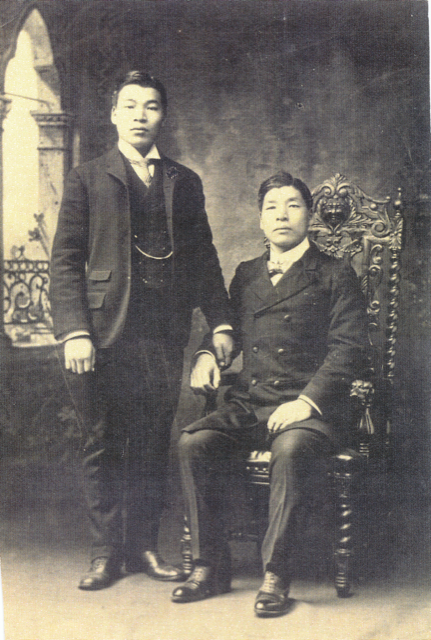
Tsuneji and Junjiro Sato. Date unknown. Source: Courtesy of the Sato brothers' descendants.
Upon the completion of Henry and Clara Ford’s sprawling Fair Lane Estate in 1915, Clara Ford contacted the Japanese Reliable Employment Agency of New York City looking for help. The Fords' former Japanese domestic servants, a couple who had worked for them at previous homes, wanted more for their lives in America: their own house and the ability to chase their own dream. Henry Ford obliged and gave the husband a job at his Highland Park plant, leaving Clara to inquire for someone who was single and “not as attached.” What the Fords received in Tsuneji Sato, now with the adopted English name of Thomas, was someone highly regarded who had the charisma and work ethic that could keep up with the unusual demands of an automobile magnate’s family.
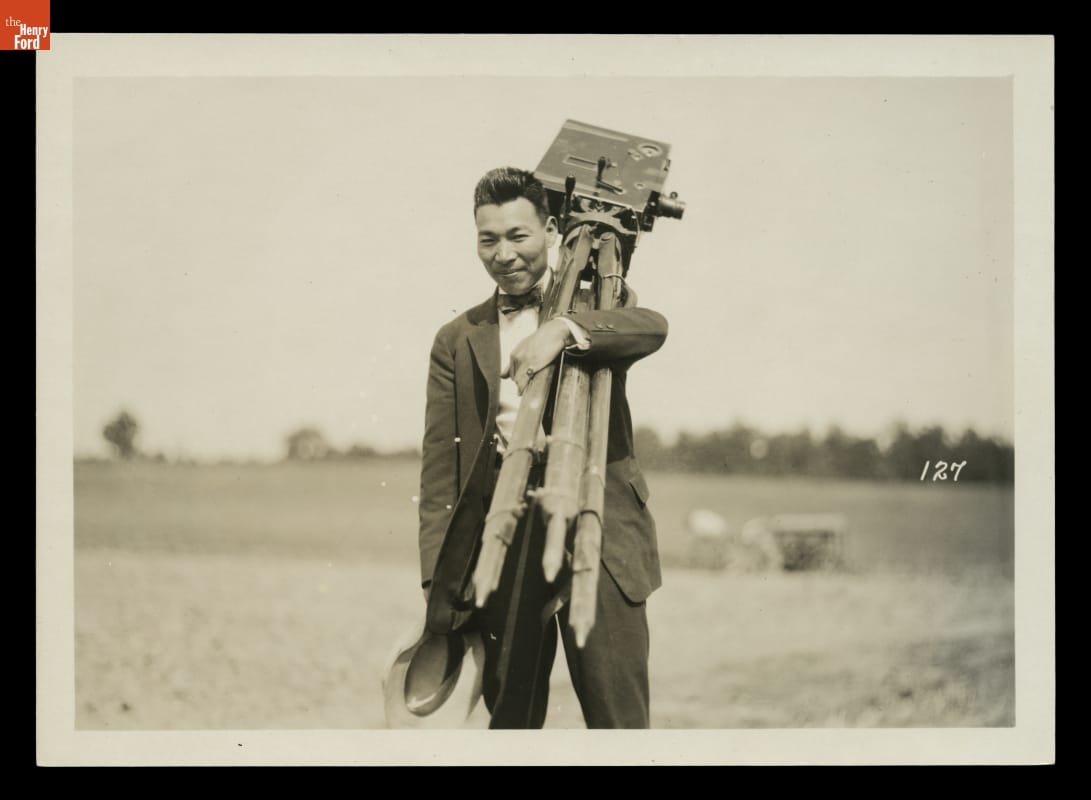
Tsuneji “Thomas” Sato carrying a camera on a 1918 camping trip. / THF122472
Thomas Sato went on to work for the Ford family directly for almost 10 years. Between the years of 1915 and 1924, he’d cook, schedule chauffeurs and secure laundresses, among many other duties that kept Fair Lane running smoothly and its owners satisfied. Records only confirm the unique circumstance Sato found himself in as the 1920 Census lists him under the names of Henry and Clara while his World War I draft registration card states his address as simply: “Henry Ford Residence.” The uniqueness of the situation was only amplified by the personality of Henry Ford, who also had particular eating habits and relied on Sato’s cooking skill.
At some point, Ford sent Sato to be trained under the zealous health practitioner J.H. Kellogg in the art of Kellogg’s “biologic living.” Kellogg praised Sato as “a very pleasant young man,” a compliment that would be echoed and expanded upon by Henry Ford’s camping partners, the “Vagabonds.” This group, consisting of Henry Ford, Thomas Edison, Harvey Firestone and naturalist John Burroughs, embarked on a series of camping trips between 1916 and 1924 with service staff in tow. It seems, based on surviving accounts, that not only did they enjoy Sato’s food but his company as well.
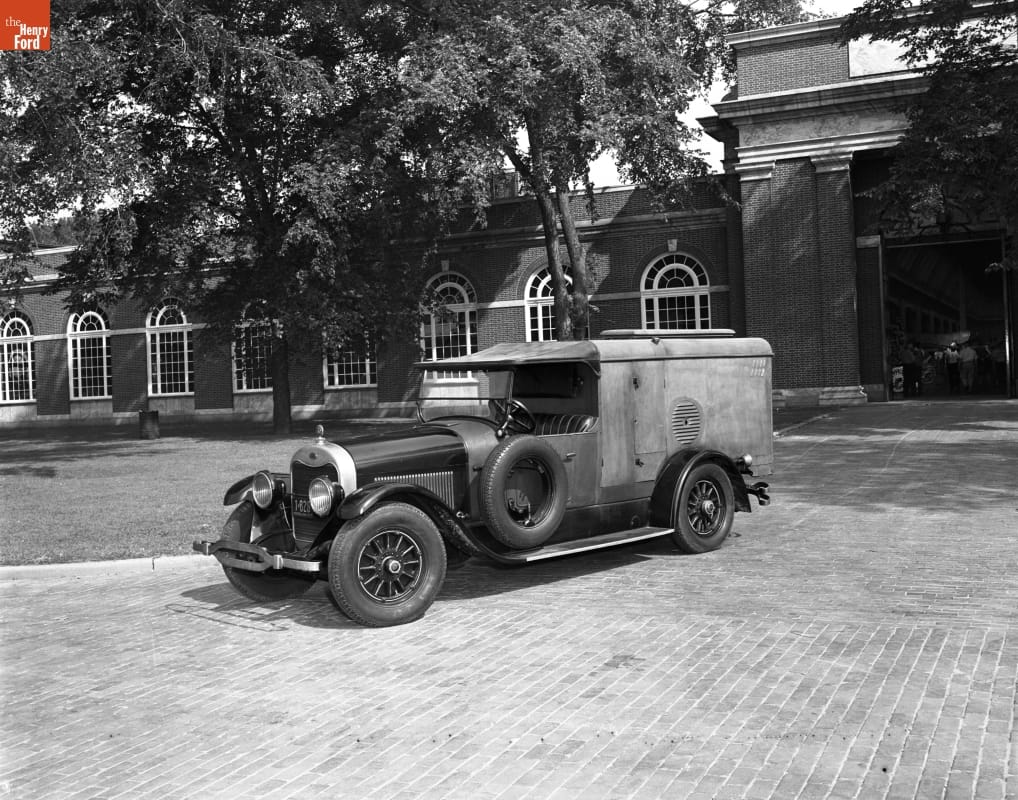
This modified Lincoln vehicle functioned as a mobile kitchen for Tsuneji “Thomas” Sato when traveling on camping trips. Part of The Henry Ford’s collection. / THF85797
In the face of an outwardly hostile nation, Thomas Sato exercised some level of personal autonomy and leveraged his unparalleled relationship with an automobile tycoon in order to find prosperity in America. When he went back to Japan to convince family to emigrate, Henry Ford ensured Sato had a car and the appropriate Ford connections upon arrival. When he joined forces with his brother Junjiro, who had become an automobile engineer, battery inventor and patent holder, to create the Sato Battery Company, Sato relied on Ford to help ensure his business operated correctly. Even when the company failed and life took Tsuneji “Thomas” Sato in a different direction, he was still able to return to Michigan as a security officer for Ford Farms. Sato intimately experienced what American prosperity looked like, what it felt like, its circumstantial spontaneity and, perhaps along the way, what American prosperity’s shortfalls were.
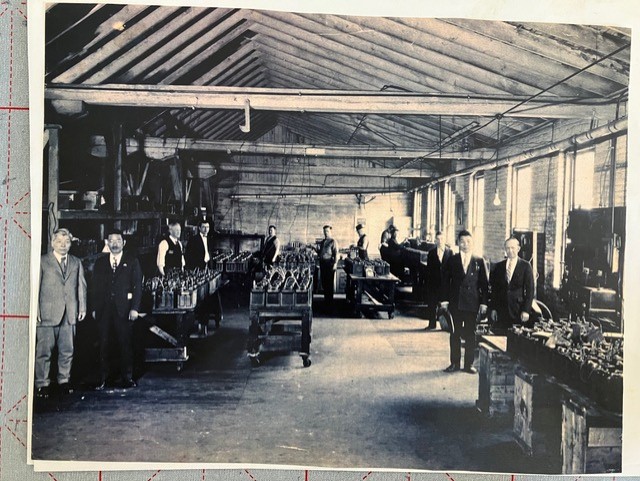
Inside the Sato Battery Company, mid-1920s. Junjiro Sato pictured in glasses on the left and Tsuneji Sato on the right. Source: Courtesy of the Sato brothers' descendants.
Ryan Jelso is a former associate curator. The contributions of the Sato brothers' descendants were essential in helping to understand the facets of this personal yet broad story.

